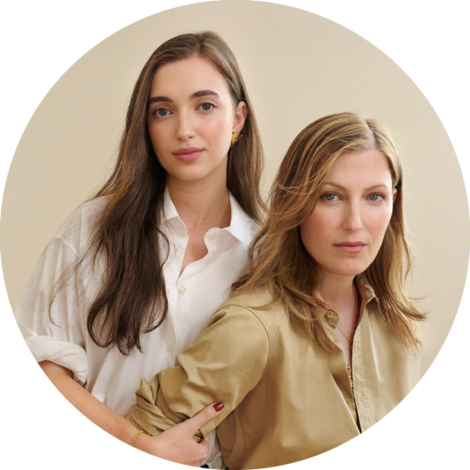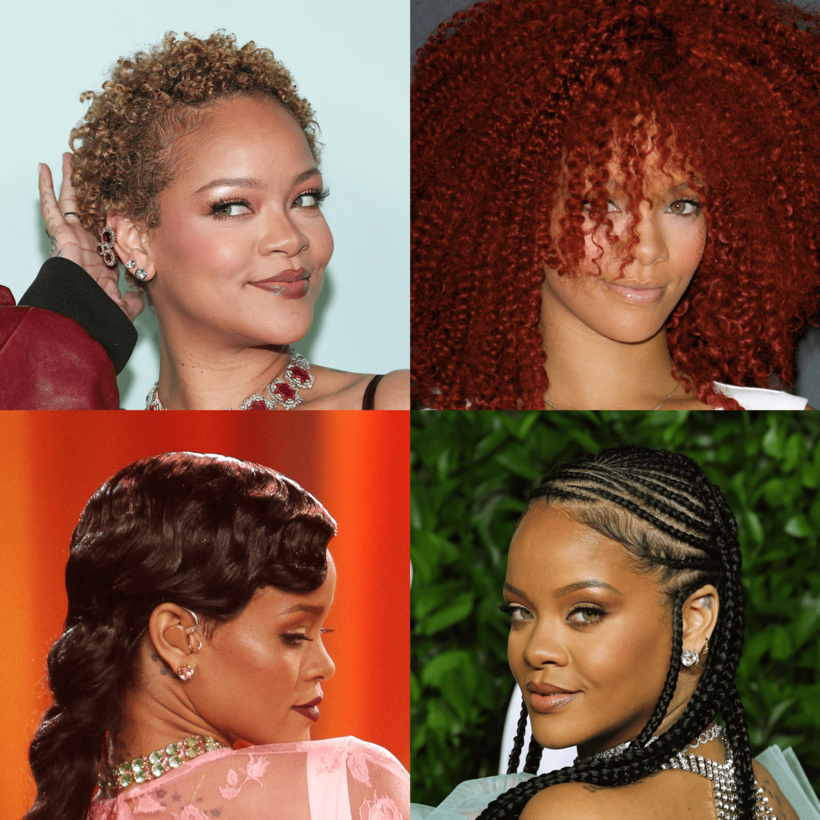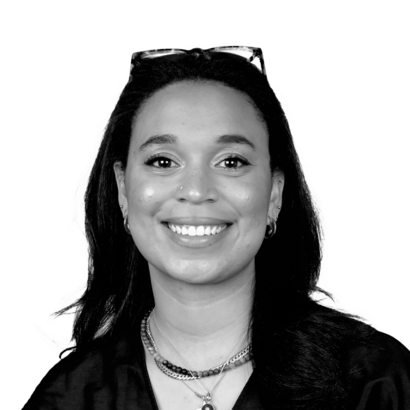I was taking a bite of birthday cake in a West Village restaurant when the energy in the room changed. The waiters whispered, the maître d’ dashed around, and then Rihanna swept by, her hair a bright cherry red. I was 11 years old, and “Only Girl in the World” was a fixture on my iPod Nano. It’s fair to say that I still haven’t fully recovered.
When Rihanna launched Fenty Beauty seven years later, it was the first time I could walk into Sephora and easily find makeup in my shade. As a teenager, wearing her products felt like borrowing a little piece of confidence. Now she’s extending that attitude to hair—no small feat for a Black woman.
My hair has shaped my feelings about myself for as long as I can remember. Starting when I was three, my mom put my hair in braided pigtails or a French braid; this was the easiest way for her to do my hair in the morning before she went off to work. When I wore my curls out of braids to school one day, I came home in tears. The kids petted and pulled my hair, telling me it reminded them of their cat or dog.
Later, when I was the only Black girl selected to perform at the Metropolitan Opera, my hair again became a subject of conversation. I was instructed to straighten it so I wouldn’t stand out from the other children. It took two hours of combing, brushing, blow-drying, and ironing to transform it. One night, while I waited to go onstage, one of the adults charged with watching us stroked my head, saying, “How pretty you look with your hair straight.” I wished I could hide.
Before I headed off to boarding school in New England, I googled how to dress, dreading having to do my hair by myself for the first time. I begged my mom to let me try keratin straightening, a new chemical treatment that my wavy-haired friends swore by. This was going to be the answer. When the technician finished and I looked at myself in the big salon mirror, my eyes welled up. Some sections were suddenly board straight while others were as curly as before. The whole experience left me with a new crop of insecurities. It would take until the end of my sophomore year in college for my hair to return to its natural texture.
The kids petted and pulled my hair, telling me it reminded them of their cat or dog.
By then, I felt free to experiment, wearing my hair straight, curly, in box braids and twists. My hair became a source of confidence, a way of expressing myself and connecting with the Black women around me. And again, Rihanna entered the room and changed the energy.
Fenty Hair is made for people like me, who wear their hair straight on a Monday, natural on a Wednesday, and braided on Sunday. With all that creativity comes damage, and Rihanna has us covered on that front, too.
I tried three Fenty products that promised to moisturize, nourish, repair, and detangle—exactly what my naturally thick, dry, curly hair needed. One Sunday, I shampooed with the Rich One, followed by the Richer One conditioner. They smelled coconutty, like a piña colada. I smoothed on the Comeback Kid, a damage-repair treatment that you can rinse out or leave in. With a little gel, I French-braided my hair. When I unfurled the braids on Monday, my curls actually bounced. A few days later, I mixed a pump of the leave-in conditioner with some water and left that to do its magic. It was humid and hot and so rainy that my Baltimore neighborhood was under a flood-and-tornado watch. And still, the hair products were undaunted. As an art curator, I had a schedule packed with studio visits and long days of installations; there was no time to worry or fuss over my hair. And yet it remained supersoft even as I switched to a slicked-back style later in the week.
Much as in high school, Rihanna and Fenty helped me feel beautiful and confident. I still haven’t gathered the courage to dye my hair bright red, but Rihanna has moved on, too. I embrace my hair exactly the way it is and hold my head high, just like someone who meant so much to a girl who wasn’t sure exactly where she fit in and yearned to find her place in the world.
Annie Roberts is a Baltimore-based art curator who grew up in New York City. Most recently, she co-organized Looking for Langston at the Museum of Modern Art, in New York





